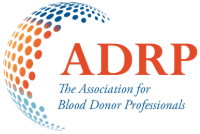Rethinking the role of older donors in a sustainable blood supply
INTRODUCTION
Many countries, particularly high human development index countries, are facing the challenge of an aging population.1 For Blood Collection Agencies (BCAs) in these countries, an aging population poses two key problems. First, the loss of an increasing proportion of their donor base as donors “age out” of donating. Second, a projected exponential growth in demand for blood products as populations age and disease burden increases, of which many diseases (e.g., cancer) likely require treatment with blood-derived products.2–5 Historically, increases in demand have been met with initiatives to either reduce demand (e.g., patient blood management)6 or increase supply.4 With limited initiatives occurring to curb demand further,7,8 BCAs need to increase supply. However, as Tran and colleagues noted in their recent commentary,8 while we teeter on the precipice of increasing demand for blood products, participation rates in donating are falling.8,9 Thus, there is growing concern about the ongoing sustainability of the
blood supply.
Donor recruitment campaigns have historically been targeted at the young.2,10,11 The assumption underlying this approach is that younger donors are more likely to be healthy and have a long donor career.12–15 Yet, younger donors are not an all-encompassing solution. As noted, in many countries there is an aging population, meaning that the proportion of the population who are young is diminishing.1 Further, in this cohort, and in cohorts who are middle aged, the decline in participation in blood donation is particularly pronounced (e.g., 16–24 years,8 17–35 years,16 25–49 years,3). Those recruited from these cohorts are less likely to return and have higher rates of deferral (i.e., be ineligible to donate) than other donors.2,10,12,17,18
July 9, 2025
Related Resources
Engaging blood donors as advocates Social media preferences and associations with marketing
Background: Various critical medical procedures would become impossible without blood donations—saving lives in emergencies, surgeries, and chronic conditions like thalassemia. Therefore, it seems crucial to enhance donor recruitment and ensure…
Rethinking the role of older donors in a sustainable blood supply
INTRODUCTION Many countries, particularly high human development index countries, are facing the challenge of an aging population.1 For Blood Collection Agencies (BCAs) in these countries, an aging population poses two…


